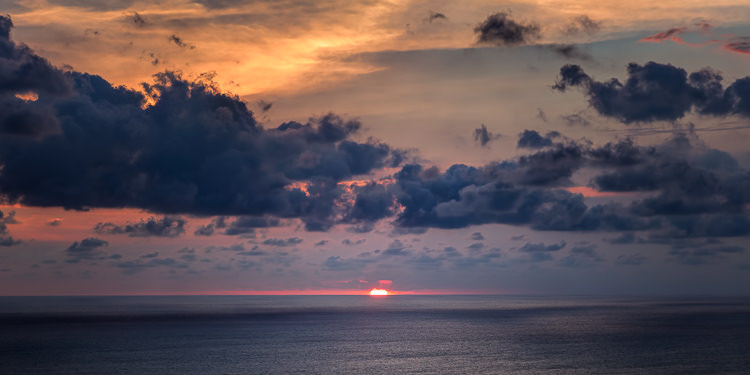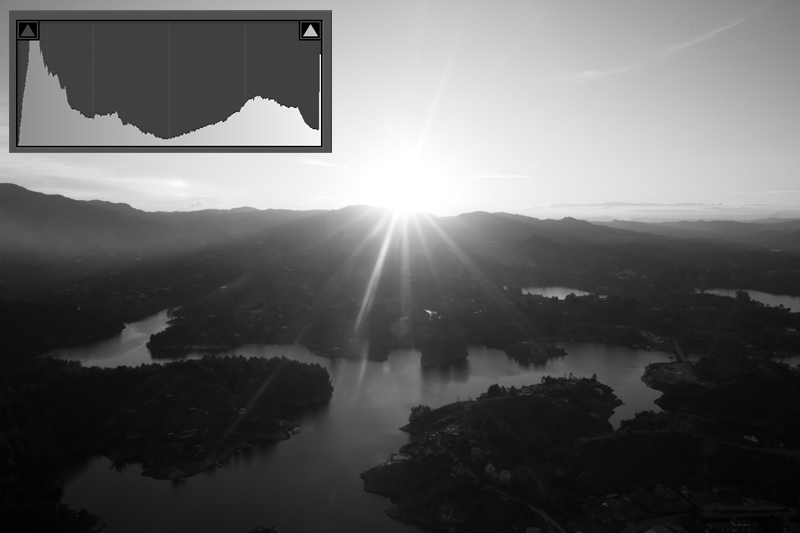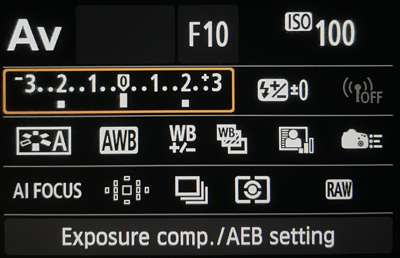Last updated on December 26th, 2020
When you’re photographing a sunset, it can be challenging to accurately capture the landscape with a handheld camera or mobile phone. What your camera photographs may not exactly look like the stunning sunset in front of you. Don’t worry, there’s a way to solve this problem. It’s a technique called HDR that experienced photographers use and can be quickly learned by beginners. What is HDR photography? In this guide, we’ll cover the major topics of HDR to get you on your way.
What is HDR Photography?
HDR stands for High Dynamic Range and HDR photography is the technique to capture the dynamic range of a scene. Essentially, it’s the tonal or light range in a scene or photograph. In simpler terms, HDR is the difference between the brightest and darkest areas.
For example, a mountain with the sun in the background would have a high-dynamic range. The mountain will cause a shadow making certain parts of the scene dark and the sun will make the other parts bright. This scene will have very bright and dark areas; hence, the high dynamic range.
Human eyes are more advanced at seeing the dynamic range of a scene and its details compared to a what a camera can capture. Cameras are not able to expose correctly for bright and dark parts of a scene in one photograph; HDR (imaging or HDRI) photography assists with this problem.
In technical terms, the tonal range of an image is displayed on a histogram between 0 to 255. For every value between 0 to 255, the histogram displays how many pixels are at that value.
Below is the histogram of an image which has a low HDR. In other words, it’s an LDR (Low Dynamic Range) image.
Even without looking at the image, you can tell the image has many areas that are excessively light or dark without.
The histogram graph is pushed to the left and right with the middle area being mostly empty. That’s because there aren’t many pixels in the midtones or around halfway between 0 to 255.
I chose a black and white image to display the histogram because it’ll be easier to understand.
Does the image look good? Yes, I think it does. But it can be improved with a few adjustments like increasing the shadows and decreasing the highlights in Lightroom. However, the full tonal range will not look good on a pixel by pixel basis. I know this because I already tried it. That’s why we use HDR.
How Does HDR Photography Work?
HDR photography, also known as HDRI (high-dynamic-range imaging), generally consists of three or more photos that are photographed using the camera’s AEB (automatic exposure bracketing) function: normal exposure, under exposure, and over exposure. The three bracketed photos will be merged into one image using HDR software.
When to Use HDR Photography
The best times to use HDR is in poor lighting. By this I mean poor lighting for a camera. The lighting can often be beautiful to human eyes.
Landscapes that have many bright and dark areas are better served with HDR photography. Examples of these would be during the twilight hours such as sunrise or sunset. There is also what’s called the blue hour, which is still part of the twilight hours when the sky is mostly a dark blue with no other main colors in range.
Real estate photographers can capture better images with this technique as well. Shooting HDR images of houses tend to look better during the twilight hours.
We don’t always have to be outside to take advantage of HDR photography. Capturing photos with HDR indoors is a common practice. There are two main reasons for this. First, ambient light creates shadows. Therefore, HDR can recover the dark areas. Second, HDR images often give an aesthetic look to an image, which is another reason HDR photographers follow this technique.
You also have to be careful not to go overboard with HDR. You shouldn’t capture three bracketed images when one photo will suffice. If there is ample light, and the camera can capture all detail with one image file, then don’t do HDR.
Also, remember that bracketed photos are going to take extra space on your computer. Digital space costs money.
Below are a couple examples of HDR photos.
How to Do HDR Photography
This guide will give you an idea of the HDR photography workflow. But first, you’ll need the right equipment and HDR software. You’ll provide a few pointers.
Equipment and Software Required
Now that you have a general idea of HDR photography and how it works, we’ll go into more detail of the equipment and software required. In order to produce high-quality HDR images, you’ll need the following tools.
Camera with AEB Shooting and Manual Mode
As mentioned earlier, AEB or Automatic Exposure Bracketing is a required feature in a camera. AEB allows you to change the camera exposure setting or f-stop automatically by a predefined range.
Most modern camera systems have the AEB.
Furthermore, the camera will need to have manual mode so we can control the camera settings. There is actually one method that is preferred over manual and that is aperture priority. But if a camera has manual mode, then it will most likely have aperture priority.
Lens
You can technically use any type of lens for HDR. But a few things to factor is who or what your subject will be.
The most common HDR photos come from wide-angle, zoom lenses. You can also a use prime, wide-angle lens that has only one focal length. I’m usually doing HDR photography with my Tamron 24-70 mm lens.
Tripod
Since you’ll be taking photos that need to be aligned, a tripod is preferred. You can get away without using a tripod since HDR software can align the images. But in darker scenes that require slower shutter speeds, handshake can be a problem that will cause motion blur or misalignment.
HDR Software
There are plenty of software that can merge bracketed photos to create an HDR photo.
Photoshop and Lightroom both have HDR merging abilities, but it’s basic and the quality is lackluster. They don’t provide many user options to manually adjust the image.
It’s better to use software dedicated to HDR photography such Photomatix or Aurora HDR. You can read the Photomatix summary or Aurora HDR review for more information.
Exposure Fusion and Tone-Mapping
Generally, the best HDR software uses exposure fusion or tone-mapping to merge the set of bracketed photos.
Exposure Fusion blends the bracketed photos in such a way as to make the shadows and highlights viewable. This method involves taking the shadows from the overexposed source image and the highlights from the underexposed source image and fusing them into one LDR image.
Tone Mapping is a bit more complicated. First, it merges the photo into a 32 bits/channel unprocessed HDR image, which can’t be displayed on monitors or prints. Second, tone mapping transposes the HDR image into a LDR (low dynamic range) image in order to be displayed or printed.
Note: When we say an HDR image, it’s actually a LDR image that was fused with source images from a high-dynamic scene. But the process is called HDR photography, fusion, or tone mapping.
Prepare Your Camera
Now that you have your equipment, you’ll need to understand how the AEB works and setup your camera.
I’m going to use my Canon DSLR as an example. Other cameras will have a similar setup.
Here are the recommended settings:
RAW
Set your capture file type to RAW. It’s better than JPEG because it has more data to use when editing images.
Lens Focal Length
The lens focal length will be your call. It depends what and where your shooting. Remember if you’re using a telephoto lens and you zoom in too much, then you might come end up with a shallow depth of field. For landscapes start with a short focal length.
Focus
It’s up to you if you want to set the camera and lens focus method to auto or manual. I prefer autofocus because it saves me time and most cameras are fairly good at autofocus.
ISO
If you’re using a tripod, set the ISO to 100 for the least amount of noise in your images. If you’re not using a tripod, then you may have to increase the ISO to reduce camera shake. You’ll also be able to reduce the noise in post-processing.
Aperture
Set your camera to aperture priority and choose an aperture size.
When I’m photographing landscapes I usually start with an aperture anywhere between f/8 to f/14. It depends on how much light there is, if I’m using a tripod, and how my image comes out on the display screen. I often use different aperture sizes for the same scene so I can compare them in post after.
For sunsets and sunrises, use a smaller aperture size to capture the starburst effect. Remember that aperture number sizes are inversed.
Aperture priority allows you to consistently keep the same aperture when shooting. The camera will decide the optimal shutter speed when it calibrates for exposure.
The reason we want to keep the same aperture size is to make sure the bracketed images all have the same depth of field or sharpness. By the way, this website is named after aperture and wanderlust. Get it?
AEB
Now that we have ISO and aperture setup, we only need to focus on AEB.
AEB works by automatically shooting multiple images at different exposures. Since the camera is set to aperture priority and we manually set the ISO, AEB will adjust the shutter speed in order to photograph at different exposures or f-stops.
AEB can be used to take multiple photos at f-stop intervals that are equally spaced: -5, -4, -3, -2, -1, 0, +1, +2, +3, +4, +5, etc. They can also be fractions and not whole numbers.
The below AEB is set to -2, 0, and +2. If we press and hold the shutter, the camera will take 3 images at these f-stops. Av is the abbreviation for aperture priority on Canon cameras.
Taking the Photos
Now that we have the camera setup, we can go out and shoot.
I recommend photographing a sunset or sunrise.
But you can also practice at home at first.
This part is easy. All you have to do is press and hold the shutter to capture the bracketed images. If you’re using a tripod, you can use the camera’s timer to take the photos to avoid camera shake.
While you’re photographing, try testing different aperture sizes.
HDR Merging
This is where the HDR photography workflow can vary widely for different users because it depends on the post-processing skills and the software used.
After merging the images in an HDR software, many photographers, including myself, add finishing touches to the HDR image in another software like Lightroom or Capture One. Finding your workflow will come with trial and error.
The below three images show an example of AEB. Notice the constant aperture size of f/8.0.
Normal Exposure
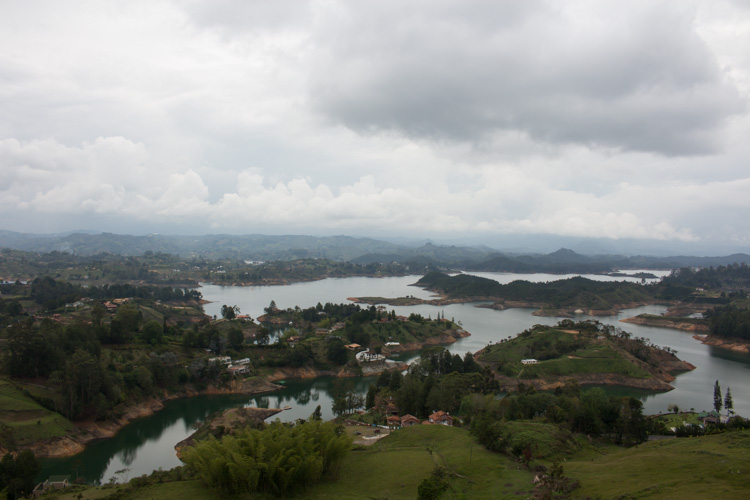
Under Exposure
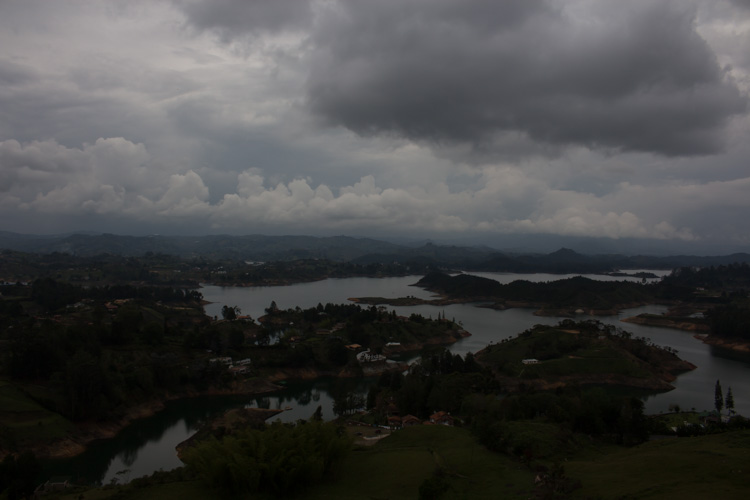
Over Exposure
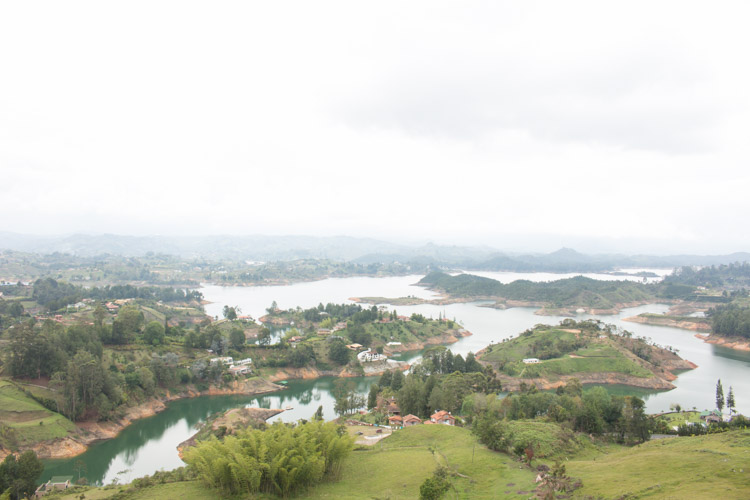
The above three photos were merged in Photomatix to produce the below HDR photo, but prior to its final post-processing steps in Lightroom or Photoshop. Consider this a middle step in HDR post-processing.
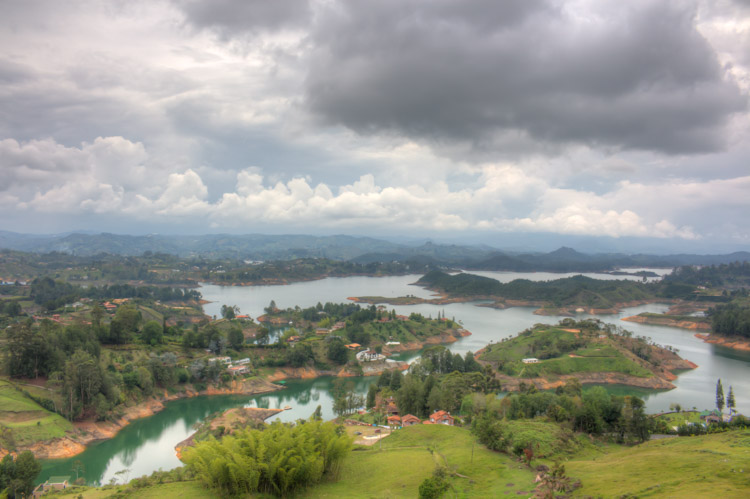
Different Types of HDR
HDR is not only common to camera systems and still photography. The term is frequently used with smartphones, videos, and televisions.
HDR on Android and iPhone
With the improved technology in smartphones, they can now capture HDR images.
Android and iPhone devices have an HDR setting that allow users to capture HDR without the need of using HDR software. The capturing of multiple images and merging them is automatically done by the smartphone. This saves quite a bit of time in the workflow.
The quality of HDR images in smartphones is impressive considering before they were only able to capture LDR. Of course, they don’t compare to HDR images that were photographed using a DSLR or mirrorless camera, but it’s still a significant improvement.
Should HDR Be ON or OFF?
The HDR mode on a smartphone should neither be ON nor OFF, the best mode is automatic. Androids and iPhones are effective in calibrating scenes. They’ll shoot HDR only when it’s necessary.
In the long run, HDR will be good for your mobile photos.
Remember that all the bracketed photos may be saved depending on the operating system and model. This can take up storage space. Therefore, make sure to change the setting to discard the original photos and only keep the HDR image.
HDR Video
Unlike their still photos, HDR videography is a different process to capture the dynamic range of motion. However, the expected output of the video is the same, to create beautiful videos with the full tonal range and vibrant colors.
One way to record HDR videos of a still scene is to use an intervalometer to take time-lapse, bracketed images. Then you can HDR merge these images through batch processing them and turn them into a video.
Of course, this is not ideal with motion capture.
Video camera manufacturers have solved this problem by improving their technology to record HDR video.
For example, RED cameras use their HDRx proprietary video solution with their RED EPIC and SCARLETT cameras. Basically, it can record video at two different exposures. You can then use the two videos individually or combine them in post. Since smartphones can photography HDR images, shouldn’t they be able to record HDR videos as well? Well, they can. Just look at the Sony Xperia.
HDR Displays
Now we know there are ways to photograph or record an HDR scene. But what are HDR displays such as TV or computer monitors?
In the simplest terms, HDR displays are brighter and have higher contrast ratios. This means they can display more detail in the shades between dark and light colors.
In addition, HDR displays have a wide color gamut (WCG), which allows them to display more shades of color.
The combination of higher brightness, contrast ratio, and WCG will give you an HDR display.
Many 4K TVs are being produced with HDR compatibility.
HDR displays come in different HDR formats such as HDR10, Dolby Vision, and Hybrid Log Gamma (HLG). If you decide to get an HDR TV, make sure it supports these formats.
But in order to watch HDR media, you need to have a TV signal that outputs HDR content. However, you don’t need to look far to get HDR content. Media companies realize HDR video provides a better viewing experience. As a result, HDR video is the next big quality standard, even Netflix supports it.
Conclusion
I hope you now understand what is HDR photography and the idea behind it. This practical method used by photographers led to major changes to how we use smartphone cameras, record videos, and now how we watch television content. It’s part of our everyday life now.

